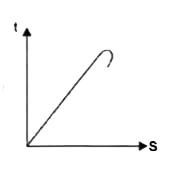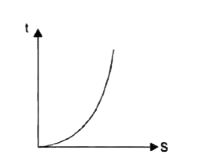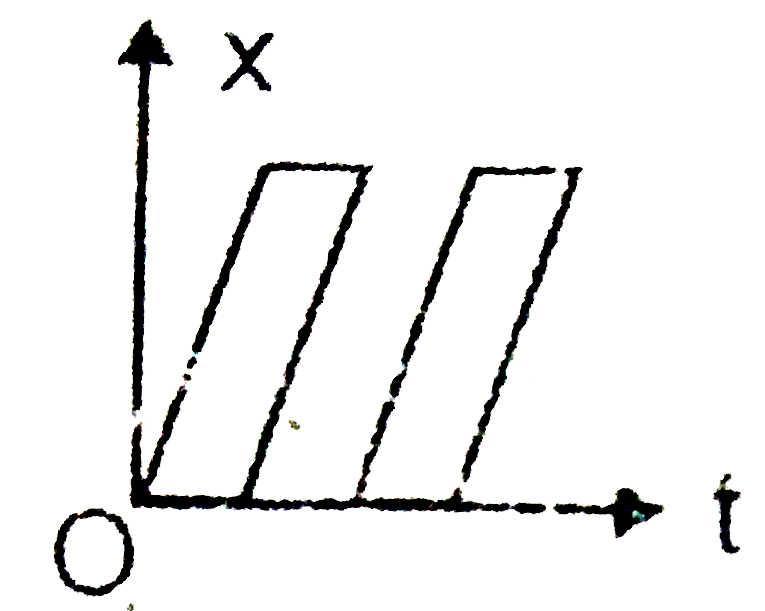Which of the following time-displacement graphs is not possible in nature?




The correct Answer is:B
To determine which time-displacement graph is not possible in nature, we need to analyze the characteristics of each graph provided in the options. Let's go through the steps systematically.
Step 1: Understand the Axes
- The time-displacement graph has time on the y-axis and displacement on the x-axis.
Step 2: Analyze Each Option
- Option 1: The graph shows displacement increasing with time. This is possible as it indicates that an object is moving away from its starting point continuously.
- Option 2: The graph indicates that at a single point in time, there are two different displacements. For example, at time t = 10 seconds, the graph shows two displacements (let's say 10 meters and 15 meters). This is impossible because an object cannot be in two places at the same time. Therefore, this graph is not possible.
- Option 3: The graph shows a parabolic increase in displacement with time. This is also possible, as it could represent an object accelerating away from its starting point.
- Option 4: The graph shows displacement increasing in a downward-opening parabola. This is possible as well, indicating that the object may be moving away and then returning towards the starting point.
Step 3: Conclusion
From the analysis, we can conclude that Option 2 is the graph that is not possible in nature because it suggests that an object can have two different displacements at the same time, which contradicts the laws of physics.
Final Answer
Option 2 is not possible in nature.
---
- The time-displacement graph has time on the y-axis and displacement on the x-axis.
- Option 1: The graph shows displacement increasing with time. This is possible as it indicates that an object is moving away from its starting point continuously.
- Option 2: The graph indicates that at a single point in time, there are two different displacements. For example, at time t = 10 seconds, the graph shows two displacements (let's say 10 meters and 15 meters). This is impossible because an object cannot be in two places at the same time. Therefore, this graph is not possible.
From the analysis, we can conclude that Option 2 is the graph that is not possible in nature because it suggests that an object can have two different displacements at the same time, which contradicts the laws of physics.
Option 2 is not possible in nature.
Topper's Solved these Questions
- MISCELLANEOUS QUESTIONSBOOK - MCGROW HILL PUBLICATIONCHAPTER - MISCELLANEOUS QUESTIONSEXERCISE - PART-B
99 Videos
- MEASUREMENTBOOK - MCGROW HILL PUBLICATIONCHAPTER - MEASUREMENTEXERCISE - ELEMENTARY QUESTIONS (HIGHER ORDER THINKING QUESTIONS)
13 Videos
- MOTIONBOOK - MCGROW HILL PUBLICATIONCHAPTER - MOTIONEXERCISE - HIGHER ORDER THINKING QUESTIONS
48 Videos
Similar Questions
Knowledge Check
Which of the following displacement (X) time graphs is not possible?
A B
B C
C D
D
Which of the following distance-time graphs is not possible?
A B
B C
C D
D
Which of the following speed-time graphs is not possible:
A B
B C
C D
D
Which of the following velocity-time graph is not possible?
View SolutionWhich of the following distance time graphs is possible ?
View SolutionWhich of the following distance-time graphs is not possible?
View SolutionWhich of the following displacement-time graphs represent damped harmonic oscillation?
View SolutionOut of the following graph(s), which is / are not possible ?
View Solution

